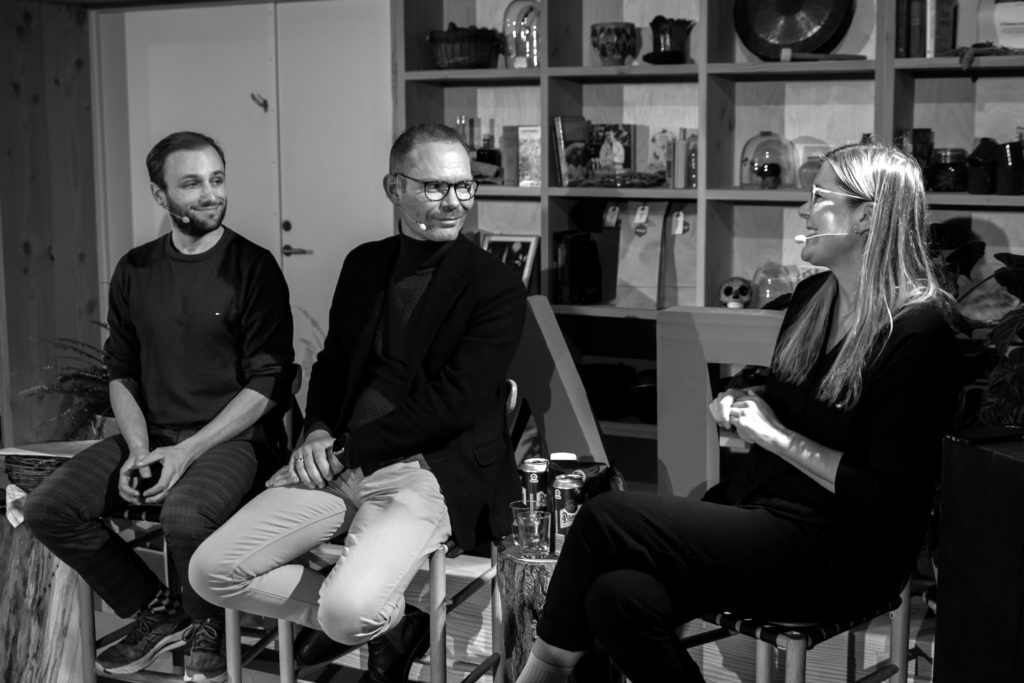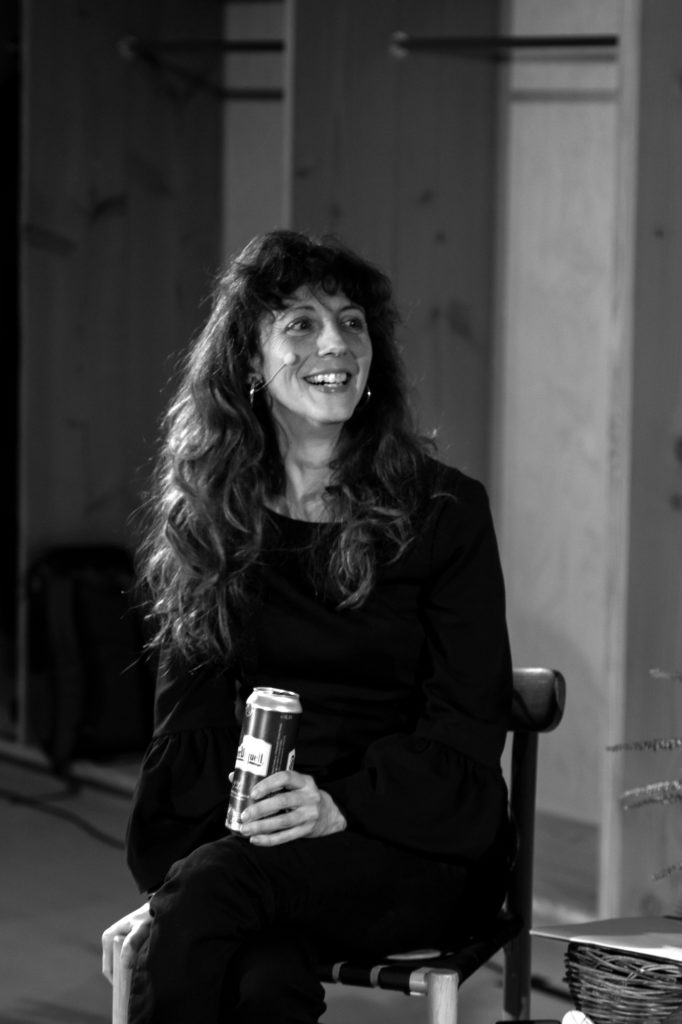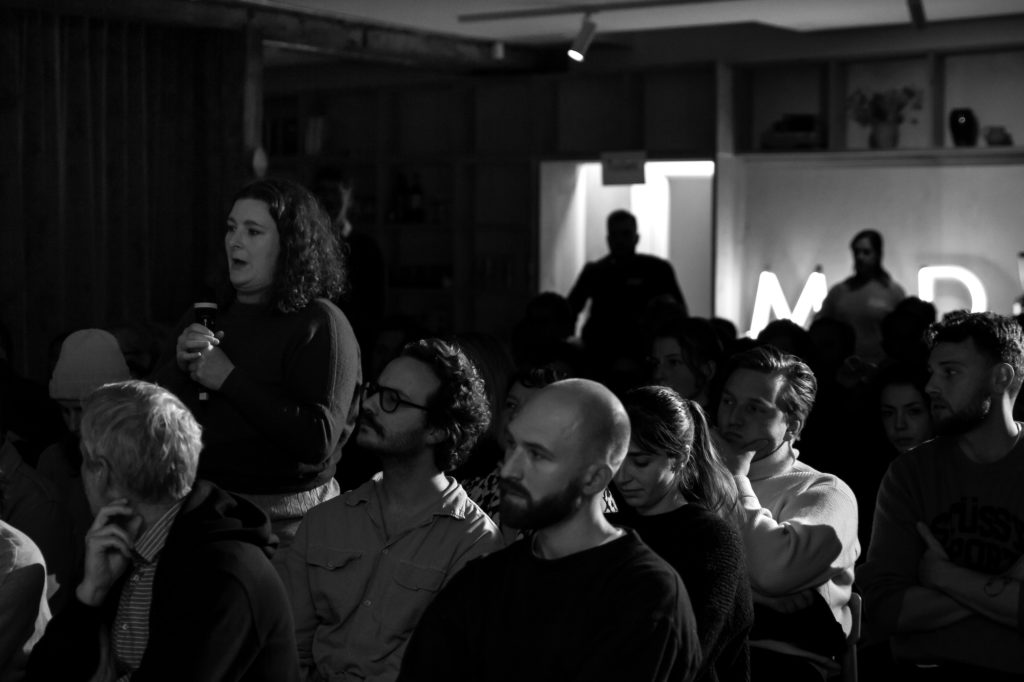If you know much about the MAD Academy in Copenhagen, founded by Noma chef Rene Redzepi and now led by Swedish chef Magnus Nilsson of Fäviken fame, you will probably know it as a place that serves up a menu of executive programmes for the hospitality industry led by progenitors of the New Nordic wave. So far, so elite, but it also hosts public talks. Priya Mani went to one of their MAD Monday events in a former warehouse three minutes walk from the Noma restaurant to hear a panel of experts discuss soaring food prices and their effect on farm-to-table principles and beyond.
It needs to be said from the start that settling down on a late autumn evening in November 2022 to discuss frugality alongside the apparent and hidden cost of food within the proximity of one of the world’s most expensive places to eat seemed like the ultimate enigma. Frugality at the most luxurious end of the system is a long way from frugality for most. Is even Denmark, whose pro capita GDP is ranked seventh highest in the world, feeling the pinch of disrupted global food chains and rising food and energy prices?
Melina Shannon-DiPietro, Executive Director of the non-profit MAD Foundation set the mise en scène of “This Bite Will Cost You” a panel discussion about how the current food price crisis is manifesting in Northern Europe, why the true cost of food must matter, what is in the price of a product, and what is missing from it.

There were three panellists: Jeff Salter, management consultant and Chief Creative Officer of Coop 365discount who has spent the past 11 years dedicating his professional life to the grocery business for SuperBrugsen, Netto, and 365discount. Michel Scholte, impact entrepreneur, director, and co-founder of both Impact Institute and True Price – the latter of which focuses on calculating and improving the true price of products, including social and environmental costs. And Hafdis Sunna Hermansdottir, a system designer with 15-plus years of food industry experience across the Nordics who grew up in a farming family and is on a mission to bring nature back into food systems. Currently, she is CEO and co-founder of Dagens, a B2B marketplace for direct trade between farmers and chefs based on regenerative principles.
“More customers are tending to buy what is on campaign and die-hard organic food consumers are shifting away from organic produce.”
JEFF SALTER, CCO Coop 365 Discount
As good a place to start as any, if you want to see how the current food crisis is manifesting in Copenhagen, is the city’s supermarkets. Coop is a consumer-owned cooperative, with an astounding three-and-a-half million customers per week in Denmark (for context, the country’s population is six million). Jeff Salter brought data that showed post-pandemic-anxious customers disquieted by the war in Ukraine and the concurrent energy crisis. “We are seeing some dramatic things happening now; trends we have not seen before”, he says. “Customers are moving into the discount band and we see that almost half of the Danish grocery volume will be from the discount segment which is a significant shift.” This echoes what the press has been reporting since the summer. Even in the glossy bubble that Copenhagen can be for some, consumers are feeling the pinch. “More customers are tending to buy what is on campaign [price-reduced] and die-hard organic food consumers are shifting away from organic produce,” adds Salter, speaking further of more volatile buying habits driven by spontaneous shopping decisions depending on what happens to be on offer on the day.

Coop has a multi-brand approach to retailing to Europe’s class-stratified communities, which means they have a number of different outlets with different names. As a whole, they tend to focus on cheaper products rather than greenwashing or labelling. Their customers tend to be those with more modest incomes. Salter says Coop is absorbing some, but not all of the price increases caused by supplies affected by the war in Ukraine and inflation: “We cannot transfer that completely to the consumers, so we, as supermarkets, are in a vulnerable position.” These events are biting away people’s incomes, pushing low-income households and exposing their vulnerability in terms of financial resilience. Importantly, they have also exposed the mysterious supply networks of our food chains. The most pressing question then starts to become: can people afford to pay the real cost of food?
Prices have begun to fluctuate a great deal as different traders respond to the crisis in different ways. Some ostensibly pass on price increases for certain goods, others absorbing them for now. As an example, Shannon-DiPietro shows some cans of Czech Pilsner Urquell (her partner’s favourite sauna beer) to the panellists. She had paid 16 Danish kroner (DKK) per can earlier that day at Super Brugsen, she says, where they cost 13 DKK until only a few months ago. At the local Fakta discount supermarket (which belongs to Coop and is soon to be rebranded as Coop 365discount), they cost 11 DKK, a saving of between two and four kroner.

So what is in the cost of this beer? Solter articulated Coop’s sourcing and pricing: “A centralised purchasing department at Coop negotiates a price for the beer, for all the various supermarket chains we run and then you add logistics, staff and rent. And in some chains that offer a nicer store experience, where there is better service, a butcher, a bakery with higher staff costs, and a wider variety of products – all drive up costs. All these elements add up to the prices, and thus the 2 DKK difference manifests in the end.” In other words, the “nicer” the store experience, the higher the cost of the products.
So are we paying either too much or too little for our beer? Michel Scholte, clearly unconvinced by the Coop logic, brought his approach to assess what could be missing from the supermarket’s price for the beer. At True Price, a part of his Impact Institute venture, they appraise the environmental and human costs of a product, so paying consumers can volunteer to pay the true price of that product. Scholte wanted to consider the product’s origin, water use, material consumption such as aluminium used in packaging, and chemicals used in colouring. His approach emphasizes social and environmental costs such as the exploitation of air, soil and water, ecological damage, and greenhouse gas emissions, and accounts for biodiversity loss, and reckons the cost of labour and covert human toll as in the exploitation of workers, underpayment and enslavement that the product might have caused. “When we can identify these issues in the value chain, we can calculate how much it would cost to restore, compensate, and prevent the infringement of fundamental human rights to achieve the true price of the product. In some cases, we have to add 200 per cent additional costs to compensate here”, he says.
“When we can identify these issues in the value chain, we can calculate how much it would cost to restore, compensate, and prevent the infringement of fundamental human rights to achieve the true price of the product.”
michel scholte, co-founder of the impact institute and true price
At the hospitality end of the scale, the alarming rise in the cost of ingredients, energy costs and riven labour streams from the pandemic era have made operational costs formidable for restaurants. This is narrowing the gap between the bottom line and top line exponentially – even for fine dining establishments. Working on pricing, transparency and dynamic supply chain networks, says Hafdis Sunna Hermansdottir: “We aggregate produce at farmer hubs that are owned by them, but often with shared storage costs. And then on our platform Dagens.farm, we connect farmers, suppliers and restaurant buyers on our database through very precise parameters from soil and location to social values and also facilitating the redistribution of any surplus back to its producers.”
“We just show what is possible with short supply chains so that money can flow differently.”
Hafdis Sunna Hermansdottir, CEO and Co-founder of dagens
Such micro-procurement in order to serve storied foods with an emphasis on terroir is the new normal in the Nordic restaurant scene, with Noma diaspora-run restaurants established all over the region. The Dagens platform is highly transparent, enlisting not just the farms (suppliers) but also restaurants, canteens, delis and shops, creating a community of trust that reflects Denmark’s pioneering farming cooperative movement, andelsbevægelsen, founded in the late 19th century. “We just show what is possible with short supply chains so that money can flow differently”, says Hermansdottir.
“What is important for efficient pricing is that we move away from a linear system and look at networks”, she adds. This is food for thought, a philosophy relevant to scale too. Agility, I gather, is not built into traditional food supply chains; a value proposition, that Hermansdottir, like digital startups of now, sees as resilience. Distributor networks, the nuts and bolts of the traditional supply complex add costs, but they also help transform this digital agility into real-world deliveries. And digital marketplaces like Dagens are keen to tap into it. Radical ideas start small, but the economies of scale catapult them into thinking like establishments. Hermansdottir would also like to explore plugging her farmers as niche suppliers into supermarkets like Coop’s buying capacity.

The course of the conversation then turned to labelling as a factor in food-buying decisions. Labels on products declare if the product is organic (how it was grown), or fair trade (nature of labour used) but often do not account for the impact on the environment or communities. But, it was argued, labelling as a whole tends not to be practised in a way that consumers can understand. “The underlying problem is that of literacy”, says Scholte, “People understand the language of money, they can count euros, but there is no real language for values of nature, human labour, let alone universal standards or systems that provide information. We need incentives that through information can propel the consumer’s behaviour.”
Denmark, Shannon-DiPietro Melina, comments, is considering a climate label in the future. But what would be the pros and cons of such labelling? Food sourced locally under defined frameworks is far more expensive than seasonal, organic produce grown in a hothouse in southern Europe – an ethical quagmire for the buyer in terms of the values they might wish to choose to support. Unravelling the dark matter of supply and transactions leads us to a new cost of food, perhaps the real cost of food, and germane to it all – why the true cost of food must matter.
“When they are asked what they value a lot of people give a nice answer, but standing in the supermarket, they tend to make different decisions.”
JEFF SALTER, CCO Coop 365 Discount
At the sign-up for this talk, the participants were polled about the primary motivator of their food shopping decisions: environment, sustainability or cost. (surprisingly, “taste” was missing as an option here.) For this audience, in this particular setting, perhaps unsurprisingly, 50 per cent said, “environment”. But even in a room full of well-off idealists, it is one thing to say what you think you would choose and another in practice in the highly impulsive world of food shopping, says Salter: “When they are asked what they value, a lot of people give a nice answer, but standing in the supermarket, they tend to make different decisions.”
Just before we took home the feeling that as consumers we have even less control over our food-buying decisions than we thought, the audience turned the subject to food packaging and questioned why plastic packaging of vegetables was not banned with fines for delinquent supermarkets. “There is always a balance between food waste and the wrapping we put around it in the store,” was Salter’s defence. Packaging like shrink-wrapping on a cucumber or a plastic cover for potatoes protects the food from damage and extends shelf life, he argues. “You can use the product for more days and thus reduce waste. One of the most critical matters for the environment is that food produced to be eaten is wasted, [it’s] a challenge to be tackled as a global system.”
The state of the food crisis is hard to uncouple from the Utopian world of fine dining, exotic foods and the omnipresent gastronomical caste system.
Nevertheless, people’s resentment of plastic and oil-fueled solutions is a tangible consumer force that goes way beyond this room. As anxiety over climate change and war rage beyond our control, plastic packaging seems to be a thing that something could easily be done about – something fixable in an increasingly unfixable world. People in taking power into their own hands with primal coping reactions seems to be a more common occurrence. For them, the state of the food crisis is hard to uncouple from the Utopian world of fine dining, exotic foods and the omnipresent gastronomical caste system.
The political climate in Denmark has been white hot this autumn, power contested with strategies to tackle food and fuel poverty and promises of socialist welfare values. Just days before Danes went to the polls on November 1, 2022, Coop quietly discounted the draconian 25 per cent VAT on all fruits and vegetables in their Coop365discount stores. And in a startling revelation about expected consumer behaviour, fruit and greens sales increased sharply, with more people choosing cruciferous heads (cabbage varieties) and mushrooms, in particular, says Salter. This begs the question: can a differential approach to value-added tax shift consumerism to climate-responsive diets? Could it be that simple? Just make foods that are less environmentally damaging cheaper?
“What gives me hope and courage is the sense that our circle of care is getting bigger.”
Shannon-DiPietro, Executive director, MAD
With rising food prices and a market that wants to push to see the true cost of food, I couldn’t have agreed more with Shannon-DiPietro who was keeping the faith to carry on, saying: “What gives me hope and courage is the sense that our circle of care is getting bigger. We are starting to ask questions we couldn’t have asked a few decades ago about who should and what should be included in the price of food and we are coming to better social conclusions all the time.” With the impact of supply chain transparency offered over the last two decades, consumers are increasingly aware of systemic challenges and contribute to resolving them by paying a premium more often – if they can afford to. This means the success of such efforts is not in complete consumer transformation but in rewarding every step up in the true-price ladder.
Raised in India and currently resident in Denmark, Priya Mani is a designer who cooks and writes about food. She uses design and ethnographic methodologies to understand food systems. On her Cookalore platform, she is currently working on an ongoing Visual Encyclopedia of Indian Foods, exploring ingredients, preparations and concepts that are unique to the Indian food narrative – its cultivation, preparation, consumption, myth and mythology.
Title image: public domain






